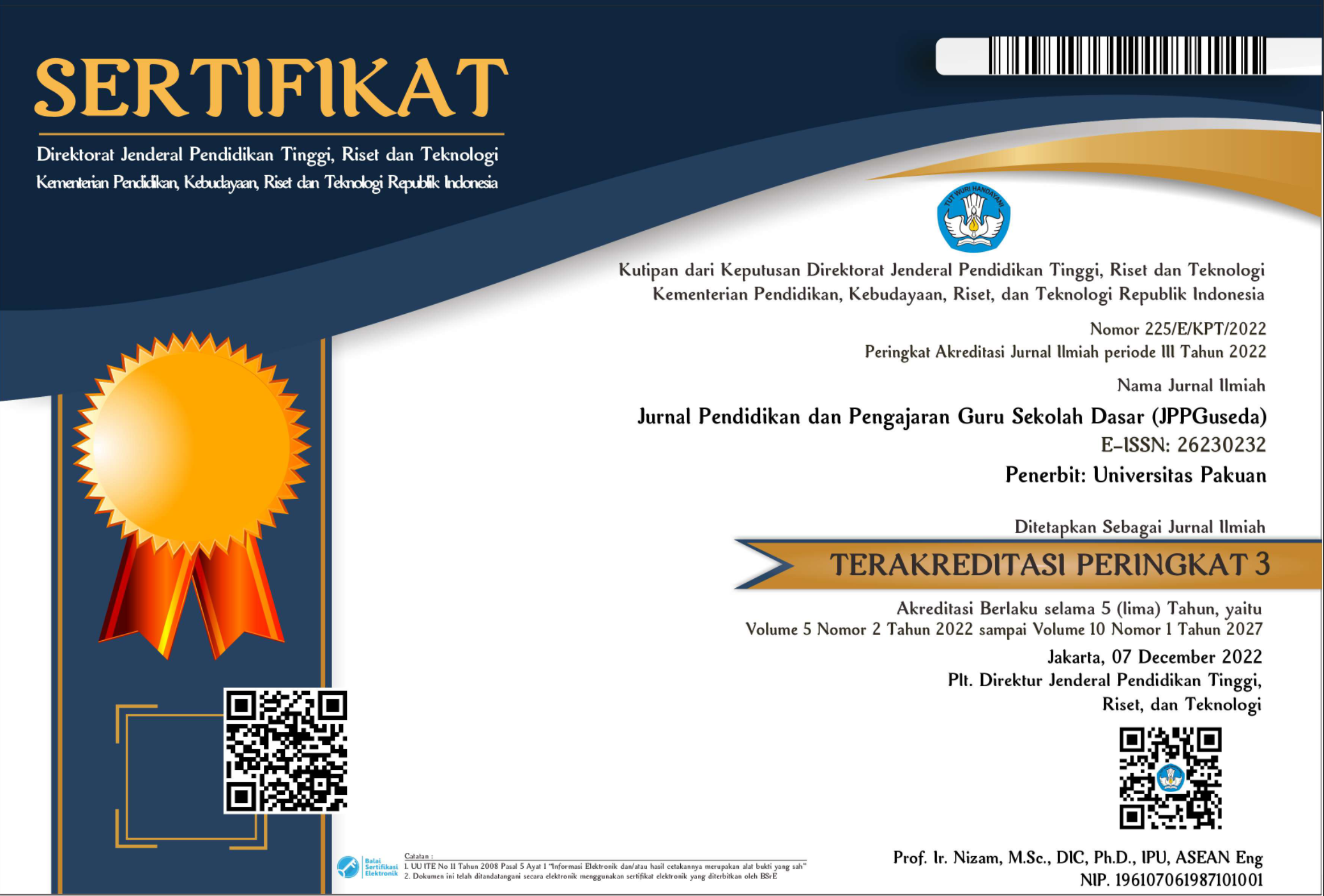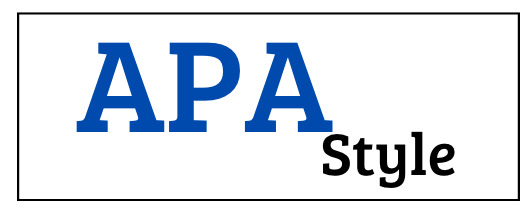PENGEMBANGAN INSTRUMEN PENILAIAN UNTUK MENINGKATKAN KUALITAS PEMBELAJARAN PRODUKTIF DI SEKOLAH DASAR
Abstract
DEVELOPING ASSESSMENT INSTRUMENTS TO IMPROVE THE QUALITY OF PRODUCTIVE LEARNING IN BASIC SCHOOLS
This study aims to produce competency-based assessment instruments in terms of cognitive, affective and psychomotor aspects that are needed in learning subjects in elementary schools. This study uses a Research and Development (R&D) approach. Data collection techniques were carried out by interview, test, observation and limited circle discussion. The population in this study were teachers in the Cluster 8 Teacher Working Group, North Bogor District. Data were collected using questionnaires, interviews, and documentation. The validity of the data was obtained through construct validity using expert judgment and respondent validation. The data were analyzed by using quantitative descriptive analysis. The results of this study show that in general the assessment system in the Cluster 8 Teacher Working Group in North Bogor District can be categorized as good, including: (1) The antecedents aspect (assessment planning) can be categorized as good. This is indicated by the average score based on the teacher's questionnaire of 2.93 from a maximum score of 4. (2) The aspects of transactions (assessment implementation) can be categorized as good. This is indicated by the average score obtained based on student questionnaires and teacher questionnaires of 3.11 from a maximum score of 4. (3) The outcomes aspect (follow-up) can be categorized as good. This is indicated by the average score acquisition based on student questionnaires and teacher questionnaires of 2.82 from a maximum score 4. The percentage of content / material validity of the instrument product is 93.45%, the percentage of the value of the validity of the instrument product design is 84.76%, very category. valid, the practicality percentage of the assessment instrument is very practical with an average value of 84.86%, the percentage of product practicality based on student responses is 82.74% with the practical category. This development research produces an instrument for assessing student learning outcomes in science learning that is valid and practical so that it can be used as a tool for evaluating or assessing student learning outcomes that is accurate in cognitive aspects. It is recommended for teachers to apply instrument products for assessment of student learning outcomes in each assessment process, such as during mid-semester and semester exams and other examinations periodically.
Keywords
References
Ratumanan, T. 2003. Pengaruh Model Pembelajaran Dan Gaya Kognitif Terhadap Hasil Belajar Matematika Siswa SLTP Di Kota Ambon. Jurnal Pendidikan Dasar, vol. 5 (1): 1-10
N. Karmila and Y. Suchyadi, Supervisi Pendidikan Di Sekolah Alam Bogor,†J. Pendidik. dan Pengajaran Guru Sekol. Dasar, vol. 03, pp. 3133, 2020.
Winarno, M.E. 2004. Evaluasi dalam Pendidikan Jasmani dan Olahraga. Jakarta: Center Human Capacity Development.
Arifin, Z. 2009. Evaluasi Pembelajaran. Bandung: PT. Remaja Rosdakarya.
Poerwanti, E. 2001. Evaluasi Pembelajaran, Modul Akta Mengajar. Malang: UMM Press.
Y. Suchyadi et al., Increasing Personality Competence Of Primary School Teachers, Through Education Supervision Activities In Bogor City,†J. COMMUNITY Engagem., vol. 01, no. 01, 2019.
Maulana, N, dkk. 2012. Pengembangan Instrumen Penilaian Pembelajaran Membaca Kelas VII SMP. Malang: Artikel Skripsi.
Asmin. 2006. Pengaruh Ragam Bentuk Tes Objektif dan Gaya Berpikir terhadap Fungsi Informasi Tes: Penelitian Quasi Eksperimental dengan Analisis Item Response Theory di SMU DKI Jakarta. Jurnal Pendidikan dan Kebudayaan. 062 (12):633—655.
Winarno, M.E. 2011. Metodologi Penelitian dalam Pendidikan Jasmani. Malang: Media Cakrawala Utama Press.
Wahidmurni, M., Mustikawan, A., & Ridho, A. 2010. Evaluasi Pembelajaran Kompetensi dan Praktek. Yogyakarta: Nuha Litera.
Miller, M. D., Linn, R. L., & Gronlund, N. E. 2012. Measurement and assessment in teaching. New Jersey: Pearson Higher Education
Anderson, L. W. 2003. Classroom assessment: Enhancing the quality of teacher decision making. New Jersey: Lawrence Erl-baum Associates Inc.
Y. Suchyadi, N. Karmila, and N. Safitri, Kepuasan Kerja Guru Ditinjau Dari Peran Supervisi Kepala Sekolah Dasar Negeri Di Kecamatan Bogor Utara,†J. Pendidik. dan Pengajaran Guru Sekol. Dasar, vol. 02, pp. 9194, 2019.
Mukhtar. 2011. Desain Pembelajaran Berbasis Teknologi Informasi Dan Komunikasi (Sebuah Orientasi Baru). Jakarta: Gaung Persada Press.
Sutrisno, S. 2012. Kreatif Mengembangkan Aktivitas Pembelajaran Berbasis TIK. Jakarta: Referensi.
Pawasauskas, J., Matson, K. L., & Youssef, R. 2014. Transitioning to computer-based testing. Currents in Pharmacy Teaching and Learning, 6(2), 289297.
Mardapi, D. 2012. Pengukuran penilaian dan evaluasi pendidikan. Yogyakarta: Nuha Litera.
Sugiyono. 2012. Metode penelitian kuantitatif kualitatif dan R&D. Bandung: Alfabeta.
Dick, W., Carey, L., & Carey, J. O. 2006. The sys-tematic design of instruction(4th Ed.). New York: Haper Collins College Pub-lishers
Arifin, Z. 2012. Evaluasi Pembelajaran. Ban-dung: Remaja Rosdakarya.
DOI: 10.55215/jppguseda.v3i2.2720
 Abstract views : 11629
Abstract views : 11629
Refbacks
- There are currently no refbacks.
Copyright (c) 2020 Jurnal Pendidikan dan Pengajaran Guru Sekolah Dasar (JPPGuseda)

This work is licensed under a Creative Commons Attribution-NonCommercial 4.0 International License.




















